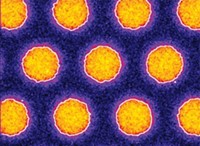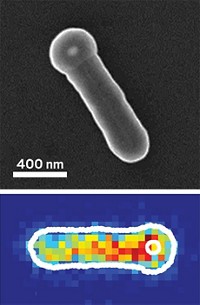Advertisement
Grab your lab coat. Let's get started
Welcome!
Welcome!
Create an account below to get 6 C&EN articles per month, receive newsletters and more - all free.
It seems this is your first time logging in online. Please enter the following information to continue.
As an ACS member you automatically get access to this site. All we need is few more details to create your reading experience.
Not you? Sign in with a different account.
Not you? Sign in with a different account.
ERROR 1
ERROR 1
ERROR 2
ERROR 2
ERROR 2
ERROR 2
ERROR 2
Password and Confirm password must match.
If you have an ACS member number, please enter it here so we can link this account to your membership. (optional)
ERROR 2
ACS values your privacy. By submitting your information, you are gaining access to C&EN and subscribing to our weekly newsletter. We use the information you provide to make your reading experience better, and we will never sell your data to third party members.
Biological Chemistry
Gold Catalysis Revisited
A new study helps clear up the controversy over possible palladium-tainted gold catalysis
by Carmen Drahl
January 10, 2011
| A version of this story appeared in
Volume 89, Issue 2
Transition-metal complexes with one or more gold atoms need help to catalyze cross-couplings such as the Sonogashira reaction, but gold nanoparticles can go it alone, according to work from a team led by Avelino Corma of Spain’s Polytechnic University of Valencia (Chem. Commun., DOI: 10.1039/c0cc04564k). Last year, Antonio M. Echavarren of Spain’s Institute of Chemical Research of Catalonia and coworkers questioned several groups’ work, including Corma’s, on gold complexes catalyzing the Sonogashira reaction, suggesting that palladium impurities were crucial for the process (C&EN, July 26, 2010, page 41). Corma’s team has now performed kinetic and theoretical studies that suggest gold nanoparticles catalyze the reaction without help from palladium. The researchers also revisited reactivity they reported was catalyzed by gold complexes and found evidence of gold nanoparticle formation over time, suggesting nanoparticle catalysis. Echavarren says the new work is in agreement with both other groups’ work on gold nanoparticles and his team’s study. Organometallic chemist A. Stephen K. Hashmi of the University of Heidelberg, in Germany, adds that it’s not surprising that the groups find different catalytic behavior because they are dealing with very different gold species. “I think both teams are right,” Hashmi says.




Join the conversation
Contact the reporter
Submit a Letter to the Editor for publication
Engage with us on Twitter